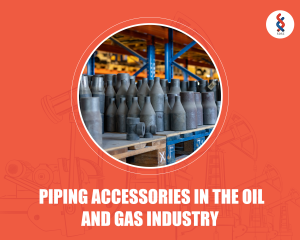Stocking Process & Techniques in an Oilfield Supply Center
Stocking is a crucial aspect of operations for an oilfield supply center, as it ensures that the necessary equipment and supplies are available and ready for use when needed. In this article, we will outline the process of stocking and the various techniques used in the industry, from the perspective of an oilfield supply center.
Step-by-Step Process of Stocking
- Inventory Management: Keeping a constant track of the inventory levels is the first step in the stocking process. This helps to determine what items are in high demand and what items are not selling as well.
- Ordering: Based on the inventory levels, the next step is to place orders for the items that need to be replenished. This includes placing orders with suppliers, manufacturers, and distributors.
- Receiving: Once the orders have been placed, the next step is to receive the items and inspect them for quality and quantity. Any discrepancies should be reported immediately.
- Storing: After the items have been received and inspected, they need to be stored in an organised manner. This includes proper labelling, shelving, and storage of the items to ensure that they are easily accessible when needed.
- Monitoring: The final step in the stocking process is to constantly monitor the inventory levels and make adjustments as needed. This helps to ensure that the supply center is always well-stocked and ready to meet the demands of oilfield operations.
Stocking Techniques Used in the Industry
- Just-in-Time (JIT) Stocking: JIT stocking is a technique that involves ordering and receiving items just in time to meet the demand. This helps to minimise the amount of inventory that needs to be stored and reduces the risk of obsolescence.
- Safety Stock: Safety stock is a technique that involves keeping a minimum level of inventory on hand to ensure that the supply center can meet the demand in case of an unexpected increase in demand or a delay in receiving the ordered items.
- Rotating Stock: Rotating stock is a technique that involves regularly rotating the inventory so that older items are used first, before they become obsolete. This helps to reduce the risk of obsolescence and minimise waste. Stock rotations can be done on the basis of FIFO (First-In-First-Out), FEFO(First-Expiry-First-Out), or LIFO (Last-In-First-Out).
- Lean Stocking: Lean stocking is a technique that involves keeping only the minimum amount of inventory on hand to meet the demand. This helps to minimise the amount of inventory that needs to be stored and reduces the risk of obsolescence.
In conclusion, the process of stocking is a critical aspect of the operations of an oilfield supply center. Proper inventory management, ordering, receiving, storing, and monitoring are all important steps in the stocking process. In addition, the use of various stocking techniques, such as JIT stocking, safety stock, rotating stock, and lean stocking, can help to ensure that the supply center is well-stocked and ready to meet all demands.
Related News


Emerging Markets for Oilfield Supply Centres
April 27, 2023

Piping Accessories in the Oil and Gas Industry
April 21, 2023

API Standards and their Importance in the Oil & Gas Industry
April 13, 2023

How to Choose the Right Supply Centre for You?
April 6, 2023

The Future of Oilfield Supply Centers: Trends and Forecasts
March 30, 2023


